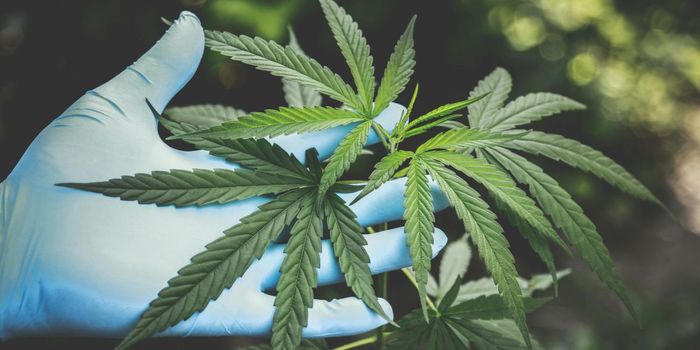If you are a cat owner you know the value of catnip. "It's like "weed" for cats," you say, as you watch your kitty practically go crazy. But is it really the same type of "high" as one would get on cannabis? Is it something along the lines of CBD for cats? What is really going on with your cat? Let's compare the two plants and see why catnip is preferred by felines worldwide while humans have more of a taste for cannabis.
A kitty enjoying some catnip. Photo source: Pixabay.com
So here are some differences. We will start by comparing the two plants. According to Leafly.com, catnip and cannabis are unrelated plant species. Cannabis is part of the Cannabaceae family. This family includes hemp, hops, nettle trees, and hackberry. Catnip, on the other hand, is a member of the Lamiaceae family, which includes mint, basil, rosemary, oregano, sage, thyme, and lavender. Catnip tea, anyone?
The two plants differ in terms of their absorption as well. Catnip, or more precisely the oil nepetalactone, is detected by the olfactory bulb (the brain's entrance to the olfactory system) through active sniffing. The main psychoactive ingredient in cannabis is delta9-tetrahydrocannabinol (THC). It is absorbed primarily by the lungs via inhalation, or through the GI tract through ingestion (i.e. edibles). Each plant produces euphoria, however, THC can also cause forgetfulness, mild hallucinations, and in some susceptible consumers, acute psychosis. And, most importantly, cats do not like cannabis, so please, do not try to get your pet high.
The pharmacodynamics (how the brain reacts to the drug) of the plants differ as well. THC binds to and activate endocannabinoid receptors (e.g. CB1 and CB2). Its psychoactive effects are mediated through this interaction. As for catnip, nepetalactone activates receptors in the olfactory bulb which send signals to the amygdala and the hypothalamus. This may explain the euphoric effects of catnip, which would be mediated by the emotional centers in the amygdala. According to Fast ESA Letter, activation of the hypothalamus can lead to species-specific instinctual behavior, such as feeding or mating. Perhaps some of you have observed your cat acting as if it were in "heat" after given some catnip?
Photo source: Pixabay.com
There are some similarities between the two plants. THC and nepetalactone both act as insecticides, and may simply be a way for the plants to avoid predation. Humans throughout history have used catnip for medicinal properties similar to chamomile. It also makes a great mosquito repellent.
Also similar is the uniqueness of the drug experience to each individual. In fact, up to one-third of cats have no response to catnip at all. This is thought to be due to genetics. Humans also respond differently to cannabis. A strain that makes one person feel relaxed can make another feel restless, on-edge, and paranoid. Essentially, each individual human or cat has a list of biological factors which could affect their response to weed or nip (the street name for catnip).
Sources: Leafly.com, www.healthline.com, https://en.wikipedia.org/wiki/Nepetalactone, www.ScientificAmerican.com, Science, Labroots.com, www.petmd.com, Fast ESA Letter










